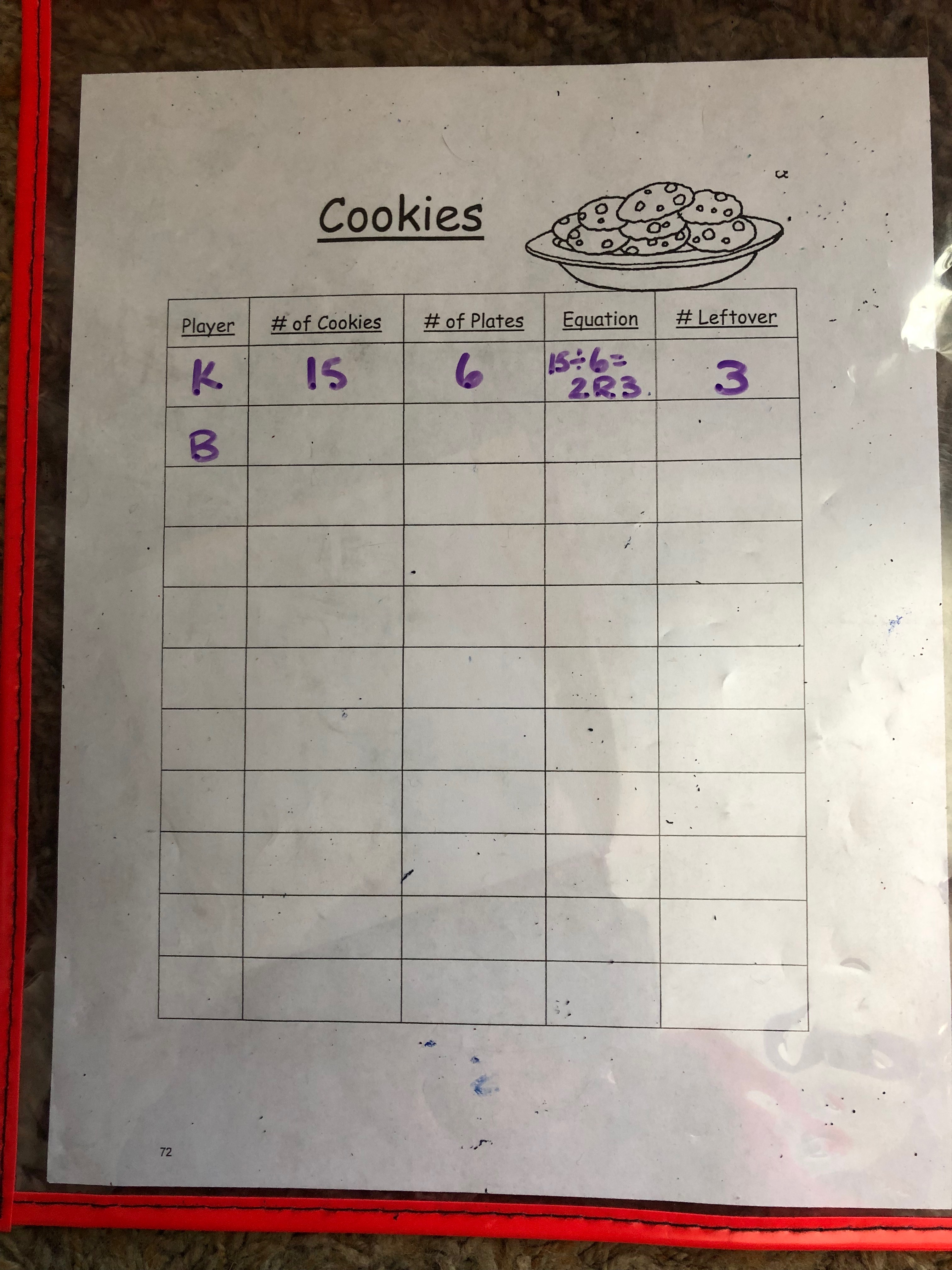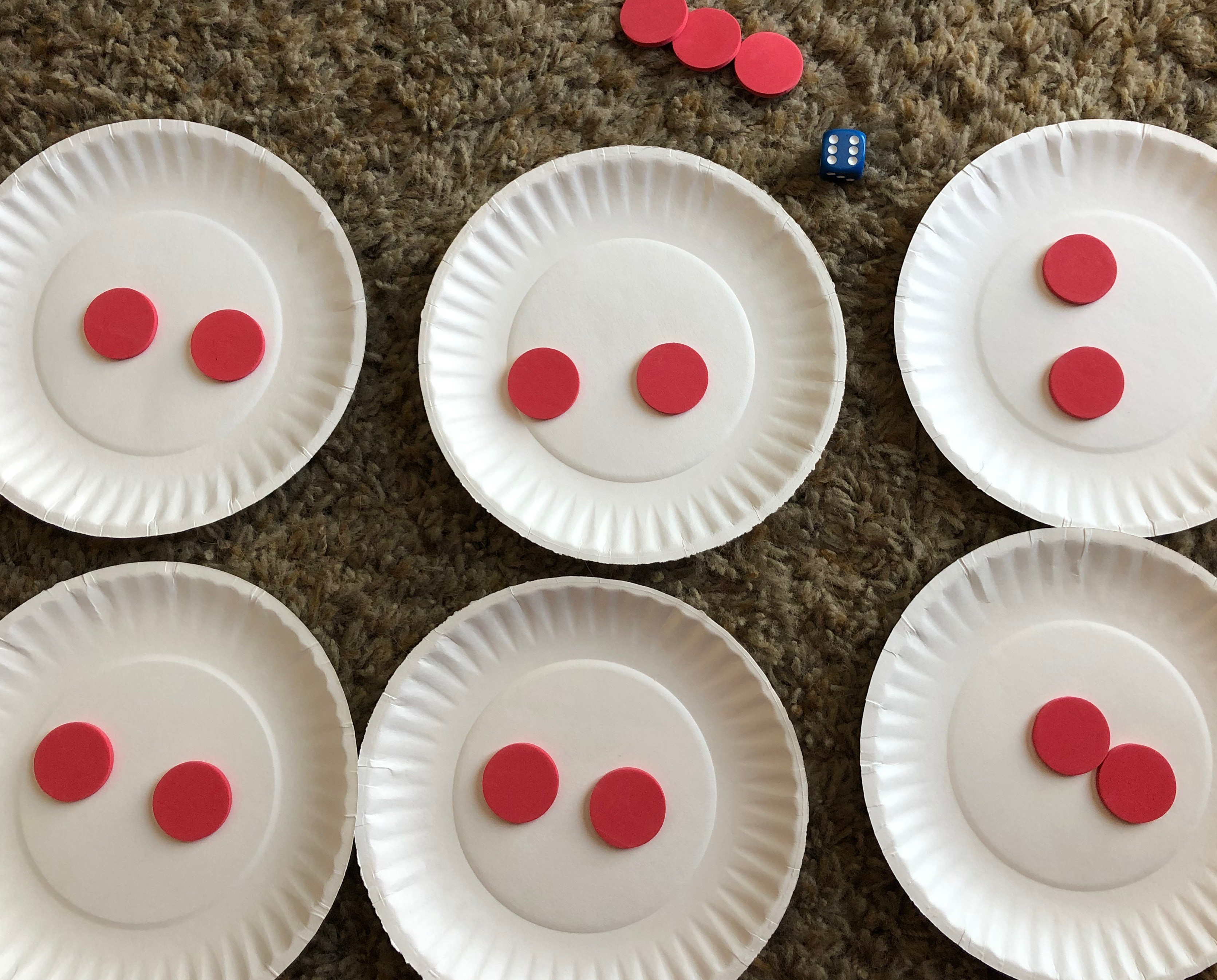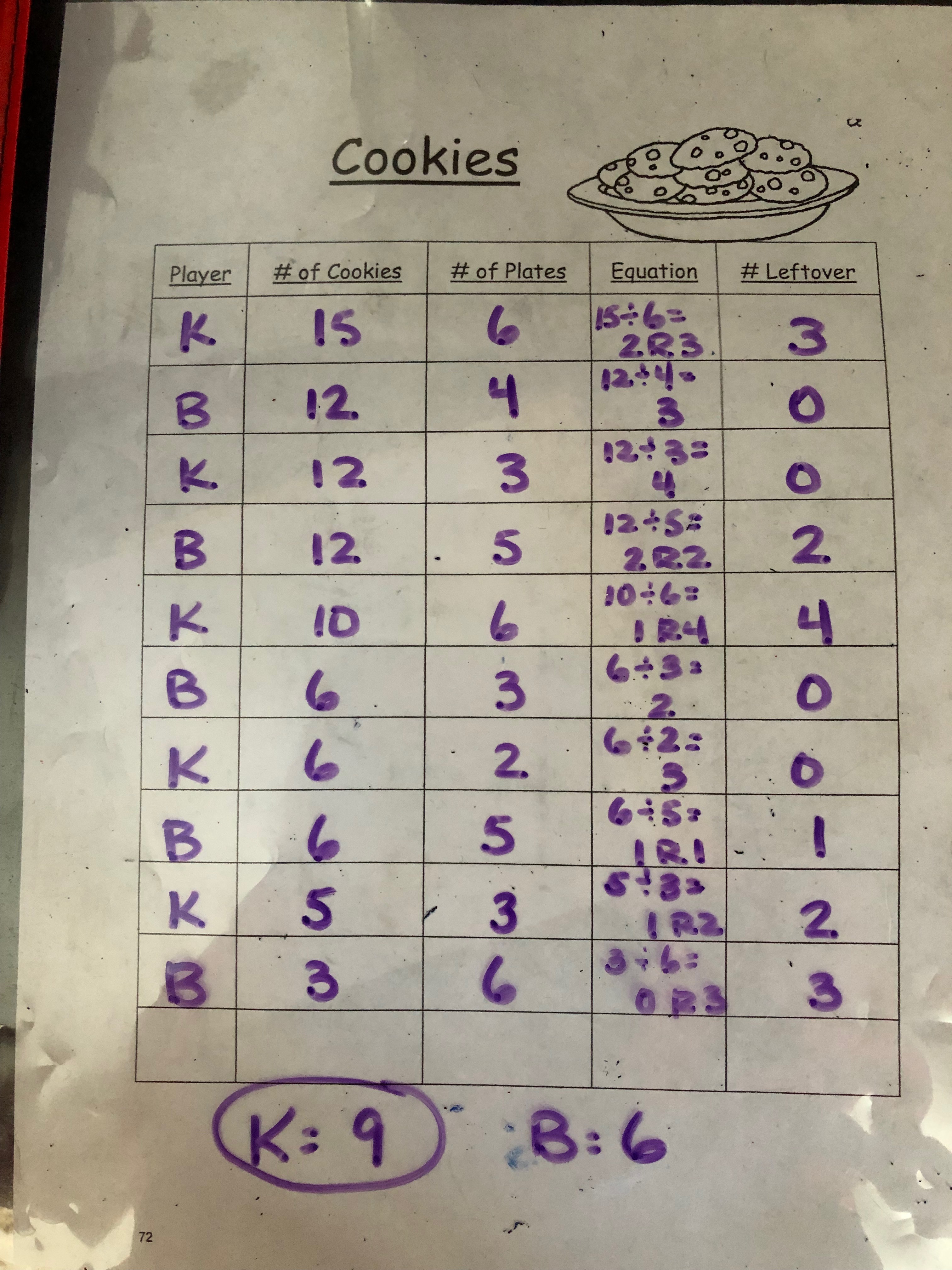A Month of Games: First Up, Division!
Many of you are knee-deep into division units during this time of year. Several years ago I came across a division lesson by Marilyn Burns (one of my math idols). I have used this lesson with my own students as well as a modeling it in other teachers' classrooms. Every time I play it the kids have fun and deeper their understanding of division.

I start out by reading aloud the picture book, The
Doorbell Rang. If you don't have access to the physical book, pull it up on
YouTube and play it from your computer. The premise of the story is a plate of
cookies which are shared by the kids. Just before they get ready to eat the
cookies, the doorbell rings. Each time a new number of people enter which means
they must change how many cookies each person will get to eat. Be sure to stop
throughout the reading of the book to have kids make predictions about what
will happen next and how that will change the number of cookies each child will
get to eat.
After reading the book, we play the game Cookies. Place your students into groups of 3-4. For each group you will need 15 "cookies", 6 "plates", and 1 die. I have attached a recording sheet, but I don't use the recording sheet until after the students have played the game several times and understand the concept. For "cookies" I like to use any type of counters: unifix cubes, two-color counters, beans, small erasers, etc. (If you want to give your students a treat you can use Cookie Crisp cereal.) I cut construction paper into 4" squares and those represent the "plates". The youngest in the group gets to go first and starts by rolling the die. The number rolled represents how many "plates" she will need to use. Let's say I rolled a 6. I would need to lay out 4 plates. Since this is the beginning of the game, there are 15 "cookies" in our cookie pile. I would take the 15 cookies and divide them evenly onto my 6 plates. I would be able to put 2 cookies on each plate and would have 3 left over. Orally I would explain to my group what I just did, "I had 15 cookies and divided them onto 6 plates. Each plate has 2 cookies and there were 3 left over." I get to keep the remaining 3 cookies. Since those are mine, we now have 12 cookies which go back to the cookie pile.


Player 2 goes next and follows the same directions, but he
only has 12 cookies to use. Let's say he rolls a 3. He would lay out 3 plates
and divide the 12 cookies evenly onto the plates. He would tell his group, "I
had 12 cookies and divided them onto 3 plates. Each plate has 4 cookies and
there are 0 left over." He wouldn't get to keep any cookies and all 12 would go
back into the cookie pile.

Play would continue until there are 0 cookies in the cookie pile. This game develops the understanding of division being equal parts of a whole, what a remainder represents, and how to write division equations. A word of caution: Let's say we are near the end of the game and there are only 3 cookies in the cookie pile and I roll a 6. We often use language with our youngest division learners that we can't do 3 ÷ 6. This isn't true. Once I lay out my 6 plates, I see I don't have enough whole cookies to put on my plates. Ask your students what we would have to do to the cookies in order to put them on the plates. Yes, we would have to break them apart. Tell your students when they reach fifth grade, they will work with those types of division problems. For right now, we keep playing this as we have been. I can't put any whole cookies onto the 6 plates, but I have a remainder of 3. I get to keep the remaining 4 cookies. My equation would be 3 ÷ 6 = 0R3.
Fifth and sixth grade teachers, play this game with pattern blocks. The hexagon represents 1 whole cookie. The red trapezoid represents a half, blue rhombus a third, and green triangle a sixth. You can have your students trade out their "whole cookies" with the fractional parts to take the division further. For example, if I have 10 cookies to divide on 4 plates, I can put 2 whole cookies on each plate, and I can take the remaining 2 cookies and break them in half. Each plate would have 2 ½ cookies. Have students keep all the fractional parts, and only return the whole cookies to the cookie pile. I've attached the recording sheet and some video clips for you to watch. I encourage you to try this with your students. Post how it goes! I would love to hear any modifications you make with your students!
Click here to access the Cookies Recording Sheets and start playing today!